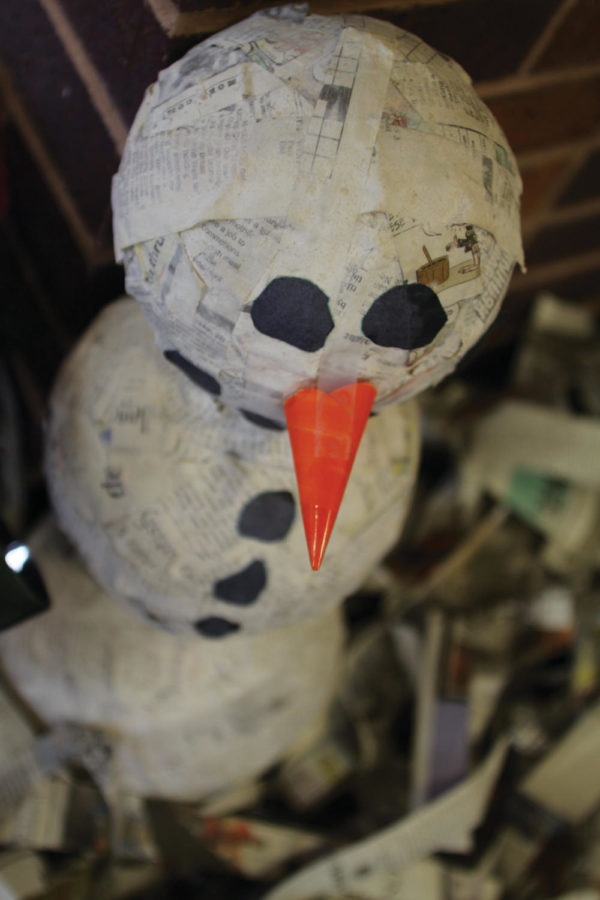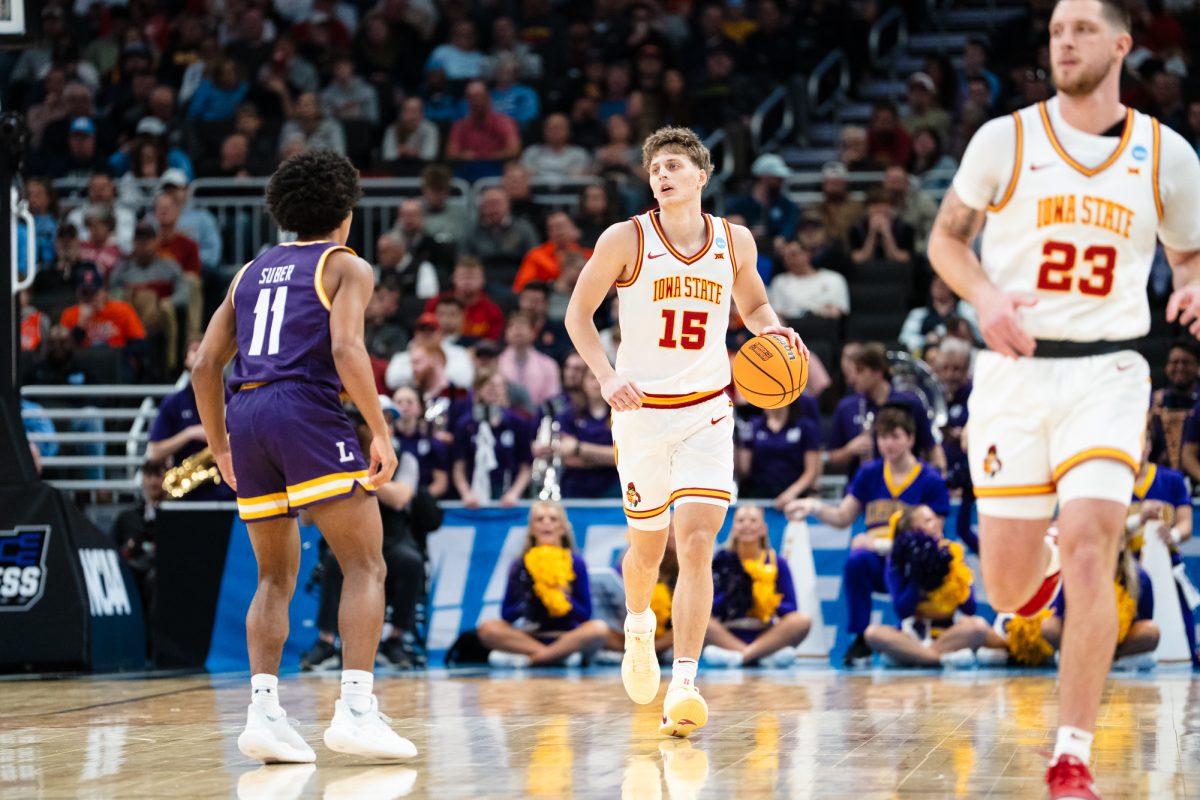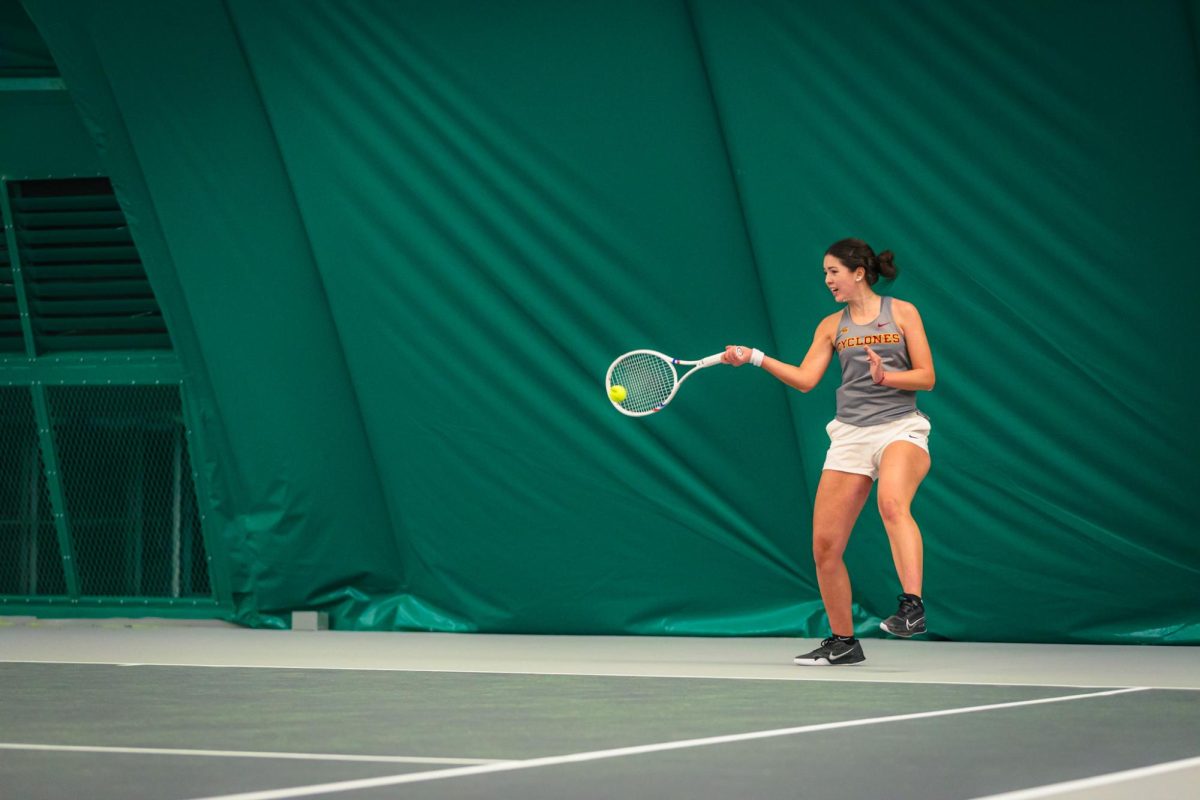Be creative through sustainable holiday decorations
December 10, 2010
With the holidays right around the corner, students deck out their apartments and dormitories with Christmas lights and other various holidays decorations. However, some students have used a more sustainable outlet to decorate.
Emily Steinweg, junior in environmental science, and Tessa Brow, senior in mathematics, work with the Frederiksen Court Council and advocate more creative, resourceful ways to get into the holiday spirit.
“Every year we have a chairperson who takes care of the decorations so the community can have that extra bit of spirit, and we were just kind of brainstorming different ideas,” Brow said. “One of our council members said ‘paper snowflakes’ and we’ve been trying recently to combine an academic or informational aspect into our program so they’re not just social. It just kind of sparked the idea with me: Why not do recycled paper snowflakes?”
From using recycled paper to produce these snowflakes, Brow proceeded with the idea and created an eye-catching visual at Hawthorn. The display included newspaper snowmen, a paper bag wreath and the Mountain Dew Christmas tree with LED lights.
The group wants to be festive, so there’s entertainment, but also education. The Live Green Initiative allows the group to take that one step further, Brow said.
“It definitely shows things you can reuse that you have,” Steinweg said. “A lot of people have bottles, so if you’re festive you can make a tree instead of just recycling it.”
Having a little creativity can go a long way, but more importantly, it relieves stress from students and keeps money in their pockets as well.
“When you’re doing that, you’re not buying new things that you need to store and hold onto for the whole year,” Steinbeg said.
Using other alternatives for Christmas lights is encouraged by Brow and Steinbeg.
“[From an energy perspective] I would recommend that when people try to decorate their homes, they do it with non-energy consuming items: colorful paper, paint a mural, put a nativity scene in the yard that doesn’t light up,” said Steve Wilson, energy services coordinator for the city of Ames. “You don’t see it at night, but it’s a way for people to get into the holiday spirit without necessarily consuming energy.”
People turning on furnaces and running fans to blow the warm air around their homes leads to increased electrical consumption. Another major contributor is holiday lights and late-night shopping.
The average amount of electricity consumed by a home in Ames is 650 kilowatt-hours per month, Wilson said.
One thing to consider is the extra electrical consumption involved during the holiday season, Wilson said.
“We can have about one or two megawatts just in the lighting itself,” Wilson said.
Wilson said anything added to your average electrical consumption means burning more coal to produce electricity.
“You could probably run a hospital from the amount of lights and amount of electricity that’s used by the Christmas lights,” Wilson said.
Steinbeg and Brow hope to educate people and keep the holiday spirit alive by continuing this project each year. They have aspirations to convince more students to decorate sustainably.
“The best way to be sustainable is go back to the simple decorations, because you don’t need huge blowup Santas, just small things like snowflakes and paper wreaths,” Steinbeg said. “I think the best part is where you can just do it with your friends and relax.”







